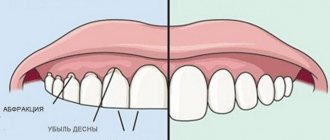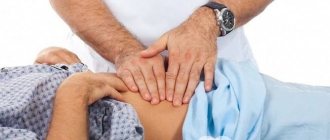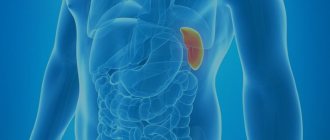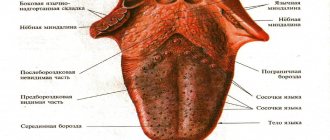How to cure a runny nose? Yandex, Google, thousands of doctors and pharmacists answer this question countless times every day. A runny nose (or rhinitis) is an inflammation of the nasal mucosa due to exposure to cold, bacteria or viruses, and the influence of allergens. The cells of the mucous membrane constantly produce secretions that protect the respiratory organs from adverse effects. When this secretion becomes too much and snot flows like a stream, we realize that we are sick and begin to look for remedies for rhinitis.
How to cure a runny nose when there is absolutely no time to get sick?
Classification of rhinitis
Before thinking about how and what to treat a runny nose, it is necessary to establish its type. Depending on the origin of the pathological process, inflammation of the nasal mucous membranes can occur in several forms.
Acute rhinitis
It begins abruptly, develops quickly, and is characterized by the most striking manifestations. There are three types of acute rhinitis:
- Infectious.
Divided into two subspecies. Nonspecific runny nose is one of the most common types of ENT diseases. It is an independent catarrhal form of inflammatory damage to the mucous membranes lining the nasal turbinates. Also, acute runny nose can be specific. In this case, it has a connection with other diseases. - Traumatic.
Appears due to physical or chemical damage to the mucous membrane. Trauma leads to the activation of bacteria living in the nose and the development of an inflammatory response. - Allergic.
It is seasonal in nature, for example, it only bothers during the spring flowering period of plants. It is characterized by a sudden onset and pronounced symptoms. To quickly cure this type of runny nose at home, sometimes it is enough to take an antihistamine.
Chronic rhinitis
This form often becomes a complication of an acute disease. It can also develop with weakened immunity and prolonged exposure to damaging factors.
Main types of chronic rhinitis:
- Infectious.
This category also includes two subspecies:- Chronic nonspecific runny nose, which, in turn, is divided into catarrhal, atrophic and hypertrophic.
Long-term specific rhinitis is divided into granulomatous, ulcerative, atrophic (ozena).
- Allergic.
It develops in the case of a delayed reaction of the body to specific allergen substances. Such a runny nose cannot be quickly treated if the provoking factor is not identified. It is possible to quickly establish the cause of chronic allergic rhinitis only in a small number of patients. - Traumatic.
Caused by prolonged exposure to harmful factors such as industrial or office dust, vapors of aggressive chemicals.
Vasomotor rhinopathy
This is one of the separately identified forms of chronic non-allergic rhinitis. It is based on a disruption of the autonomic nervous system, as a result of which the nasal mucosa reacts inadequately to odors, alcohol vapors, dust, cold and other irritants.
The following types of vasomotor rhinitis are distinguished:
- neurovegetative,
- hormone,
- medicinal,
- mixed.
This form of rhinitis often affects women over 20 years of age who have vegetative-vascular dystonia. This diagnosis is sometimes made after the patient, not knowing how to quickly cure a strange runny nose, seeks help from a doctor. A key factor in the development of vasomotor rhinopathy may also be a previous infectious disease, in particular ARVI.
Acupressure for runny nose
Even in such a narrow direction of medicine as oriental medicine, there are many different movements, which are divided by country: Tibetan, Chinese, Korean. There are also many different schools within countries.
Interesting fact. What we consider strange, for example, acupuncture and acupressure, are mainstream in China. Such medicine is considered official there. In a Chinese clinic, you will be diagnosed by your pulse (the doctor will only feel the pulse with his hands) and, depending on the situation, you will be referred to a course of acupuncture, acupressure, cauterization, or drug therapy, which they try to use to a minimum.
In Russia, they could not resist the facts of the effectiveness of oriental medicine methods, and were forced to recognize it, calling it reflexology. However, they still developed their own explanation. Russian and European scientists believe that the main action lies in reflex reactions that occur when a certain area (point) is irritated in one way or another. Or they explain this with classical theories about improving blood circulation and lymph flow, which undoubtedly also affects the treatment process. The Chinese believe that reflexes have nothing to do with it and explain everything by the laws of bioenergy. By pressing a point, placing a needle or performing cauterization, the Chinese doctor slows down or, on the contrary, speeds up the flow of various energies (depending on the points) inside the energy channels.
Let's consider acupressure for a runny nose based on the Chinese teaching “Zhen Jiu Da Cheng,” which translated means “great achievements of acupuncture.” This teaching is based on an ancient Chinese treatise written in the 16th century, which is still considered basic in reflexology. The figure shows the main acupuncture points necessary for a runny nose.
Acupressure has some advantages compared to other alternative treatments:
- it's free,
- it has few contraindications,
- it is easy to use in any situation.
Acupressure for a runny nose should be performed as follows:
- Warm your hands by rubbing them together.
- Prepare the pads of two index fingers (or two thumbs).
- Continuously apply pressure and massage clockwise to the desired points.
- Apply such pressure that there is barely noticeable pain, but do not allow unbearable pain to occur.
- Massage each point for 1.5-3 minutes, special attention should be paid to points 2, 4, 6; if you have a runny nose, they will give the greatest relief.
In total, the massage should take about 15 minutes, the procedure can be repeated 3 times a day.
Contraindications to the use of acupressure Zhen-Jiu:
- temperature 37 °C and above,
- boils located close to the points, and any other skin lesions,
- purulent sinusitis,
- greatly enlarged parotid and perimaxillary lymph nodes.
Acupressure for a runny nose is not limited only to Zhen-Jiu; there is another interesting movement, but from the Korean acupuncturist Park Jae-Woo, called “Su-Jok”, which means “arm and leg” in Korean.
Its essence boils down to the following: any human organ corresponds to a reflexogenic area on the arm and leg. The drawing will clearly form your idea of the Su-Jok theory:
If we briefly talk about treatment using this theory, then when you have a runny nose, you need to massage your nose, just not the one on your face, but in accordance with the scheme presented above. The algorithm is as follows:
- It is necessary to find the area corresponding to our nose on the big toe or toe (where the nose is drawn in the figure above). The zone is located approximately in the middle of the pad of the big toe or toe.
- Prepare a stick like a match. You will need to massage the part where the head is, it is rounded and will not cause discomfort. There is a special tool for acupressure for a runny nose and any other illness, called a “probe” (shown in the figure). It is its analogue that we need to recreate.
- Find the most painful area in the center of the fingertip; to do this, alternately press the tool first on the center, then next to it at a distance of a match head, and so we go around the entire central part of the fingertip and compare the sensations. As soon as you feel that at one specific point the pain is higher, then this is the same point from a runny nose.
- Slowly press until the pain is tolerable and wait until the pain at the point goes away, this will take about one or a minute and a half.
- In the same way, we look for and massage the points on each big toe and toe.
There is only one contraindication to Su-Jok massage
Main symptoms of rhinitis
The manifestations of this disease depend on the type and stage of the runny nose.
On the first day of development of infectious rhinitis, dryness and burning sensation appear in the nasopharynx. Then a feeling of congestion occurs as the mucous membrane swells. Taking immediate action helps cure a runny nose at home, without a visit to the clinic. In the second stage, abundant liquid discharge appears. Later they thicken and acquire a greenish-yellow color.
Allergic rhinitis is manifested by symptoms such as:
- itching,
- tickling,
- tingling,
- sneezing,
- profuse rhinorrhea (nasal discharge).
If it lasts for a long time, the sense of smell may be impaired. Crusts and growths form in the nasal turbinates, and mucus or pus is constantly released.
Acute traumatic rhinitis begins abruptly and, as a rule, affects one side. As a result of damage, the mucous membrane turns red and swells. After a few hours, mucus begins to come out of one of the nostrils.
With vasomotor rhinopathy, breathing is difficult due to nasal congestion. Transparent discharge appears. There is an unpleasant sensation caused by the flow of mucus along the back wall of the nasopharynx.
Typical symptoms of rhinitis can be combined with headache, weakness, and a feeling of general malaise. Therefore, regardless of the type and form, a runny nose must be treated quickly.
How does the problem manifest itself?
Swelling of the mucous membrane during a runny nose can be recognized by the following symptoms:
- Difficulty in nasal breathing;
- Itching sensation in the nose;
- Burning sensation.
A person may also experience headaches, fever, and watery eyes. More specific symptoms depend on the cause of the swelling.
Swelling of the nasal passages can be seen by looking into the nose in the light or shining a flashlight. The mucous membrane will look swollen and reddened. Most often, it is difficult to examine the membrane due to discharge, so it is recommended to do this after cleansing the nose with salt water.
Causes of acute runny nose
Infectious rhinitis is caused by virulent (pathogenic) microorganisms: viruses, bacteria or fungi. Most often, the disease develops against the background of acute respiratory infections, acute respiratory viral infections or influenza. Bacteria living on mucous membranes can also be activated as a result of hypothermia or immunodeficiency.
Susceptibility to infections varies from person to person. It depends on:
- conditions and lifestyle,
- age,
- general health,
- characteristics of the body,
- degree of adaptation to the effects of cold and other external factors.
The risk of contracting an infectious runny nose is higher for those who smoke and abuse alcohol, lead an unhealthy lifestyle, or live in poor environmental conditions. A small child may develop infectious rhinitis due to an undeveloped immune response.
The causes of acute specific rhinitis are infections that cause the following diseases:
- diphtheria,
- tuberculosis,
- syphilis,
- scleroma,
- leprosy, etc.
This type of inflammatory lesions of the nasopharynx is rare. And the main question in this case is not how to quickly recover from a runny nose, but what to do with the underlying disease.
Spray - modern, effective and convenient
To understand the reasons for the effectiveness of sprays, you will have to understand their structure. The main elements of the spray are a container and a special spray valve. There is always a tube inside the container through which the medicine enters the nebulizer. The medicine inside the cylinder may be under pressure due to the presence of gas, but such technology is not always used; often the usual spray effect is sufficient3.
There are three main reasons why sprays are displacing traditional drops from pharmacy shelves3:
- Accurate dosing. Thanks to the system of pressing the sprayer, one “spray” has a specific dose, which means it is almost impossible to achieve an accidental overdose, which cannot be said about drops.
- Fine spray. Passing through the spray nozzle, the spray takes the form of tiny droplets, which allows you to irrigate the entire area of the mucous membrane.
- Ease of use. The drops require a special ritual of administration, at least throwing back the head. In the modern rhythm of life, this is not always convenient or appropriate. Using sprays is much easier and faster.
It follows that even one remedy for the treatment of runny nose in adults, but in different forms, may be less or more effective.
Causes of chronic runny nose
The acute form of rhinitis sometimes becomes chronic. One of the reasons is the wrong choice of remedies and treatment methods. It is especially important to prevent long-term progression of this disease in children.
Chronic rhinitis can also be caused by:
- Atrophy of areas of the mucous membrane along with nerve endings.
This condition develops due to autoimmune reactions, disruption of the endocrine system, and genetic predisposition. - Overgrowth of connective tissue.
The cause of the development of this pathology may be the body’s reaction to the intense stress experienced by the nasopharyngeal mucosa. Provoking factors for hypertrophic rhinitis are often addiction to alcohol, smoking, and abuse of vasoconstrictors. - Overdrying of the mucous membrane due to local circulatory disorders (neurovegetative form).
This type of runny nose is treated at home quite often, since in the statistics of the incidence of chronic rhinitis its share reaches 21%. One of the effective methods of therapy in this case is regular moistening of the nasal mucosa.
What is the danger of constant nasal congestion without a runny nose?
Chronic difficulty breathing through the nose leads to a number of negative changes in the body:
- reduction in the acuity of smell to its complete loss (sometimes without recovery);
headaches (oxygen starvation);- the chronic form of allergic rhinitis can provoke bronchial asthma;
- prolonged difficulty breathing in children can contribute to deterioration of hearing and smell, and cause mental retardation;
- the appearance of night snoring;
- failure in the blood circulation of the brain is a serious threat to life;
- lack of sleep, debilitating weakness, memory impairment, depression, apathy, prolonged nervous tension.
Diagnosis of rhinitis
The main methods of differential diagnosis of rhinitis include:
- Survey.
The doctor finds out the presence and nature of the patient’s complaints, determines the order of onset of symptoms, and collects anamnesis to determine the cause of the disease. - Rhinoscopy.
The otolaryngologist examines the anterior and posterior surfaces of the nasal cavity using a special instrument (rhinoscope), mirrors and a reflector. - Identification of the causative agent of the disease.
For this purpose, bacteriological culture is carried out. By clarifying the type of pathogenic microorganism that caused rhinitis, it is possible to establish what can be used to treat a runny nose in a particular case. - Tests to determine the allergen.
This method is used if a runny nose is suspected of being allergic. To make an accurate diagnosis, skin tests are performed. - Laboratory diagnostics.
If there are accompanying symptoms, a general and biochemical blood test may be prescribed.
One of the most difficult types of runny nose to detect is vasomotor rhinitis. Medicine does not have reliable methods for diagnosing it. To make an accurate diagnosis in this case, as a rule, similar types of rhinitis are consistently excluded. First of all, the likelihood of an allergic nature of the runny nose is checked. To do this, the main symptoms are assessed, skin samples are taken, and an electrophoretic analysis of nasal secretions is performed.
Sources
- Ogra PL, Welliver RC, Riepenhoff-Talty M. Local immune response to viral antigens. Human immunity to viruses. - New York: Academic Press, 1983. - R. 81-99;
- 21st Congress of European Rhinologic Society (ERS) and 25th International Symposium on Infection and Allergy of the Nose (ISIAN). - Tampere, Finland, 2006, June 11-15;
- Karpova E.P. Rhinitis in childhood // Attending physician. - 2010. - No. 1;
- Volosovets A.P., Krivopustov S.P., Molochek A.I., Po-pivchak P.M. The value of 0.65% sodium chloride solution in the prevention and treatment of diseases of the nasal cavity in children // Child’s Health. - 2008. - No. 5(14). - pp. 23-28;
- Igarashi Y, Skoner DP, Doyle WJ et al. Analysis of nasal secretions during experimental rhinovirus upper respiratory infections // J. Allergy Clin. Immunol. - 1993. - No. 5. - P. 722-731.
Runny nose. How to treat a runny nose
Runny nose and medications
How to treat a runny nose at home?
The most important thing is to begin treatment of rhinitis when its very first symptoms appear. You can’t do nothing and expect the runny nose to go away on its own. Then the risk of complications will be minimal.
If there is no fever or cough, you can start home therapy using proven effective methods.
Drug treatments for acute infectious rhinitis
Pharmaceuticals can be used to effectively combat inflammation of the nasopharynx and rhinorrhea. These include:
- ready-made anti-inflammatory drugs based on medicinal plants,
- vasoconstrictor drops,
- moisturizing sprays,
- ointments.
Real sea water, which is similar in composition to the intercellular fluid of the body, gives excellent results when rinsing the nose. If this remedy is not available to you, at the pharmacy you can buy an equally effective ready-made isotonic solution with sea salt - Sialor Aqua. This drug is packaged in compact buffet containers. This product can be used to rinse the nasal passages at any age - adults and children, starting from birth. Irrigation of the mucous membrane with saline solution helps relieve swelling, eliminate inflammation, and improve nasal breathing.
Treatment of a runny nose in case of nasal congestion also involves the mandatory use of vasoconstrictor drops.
Features of the treatment of other types of runny nose
Basic principles of treatment of chronic and allergic rhinitis:
- Atrophic runny nose can be treated with mucous moisturizers and special medications prescribed by a doctor.
- For allergic rhinitis, medications are used that have an antihistamine effect and reduce swelling.
- Traumatic runny nose requires, first of all, elimination of the root cause of the disease, after which antiseptics are used.
- Vasomotor rhinopathy is one of the most difficult to treat conditions, for the correction of which you often have to consult a specialist.
- Treating hypertrophic rhinitis at home is also not recommended. In this case, only surgery can bring relief.
It is important to remember that vasoconstrictor drugs cannot be used to treat medicinal and hypertrophic rhinitis.
Physiotherapy
Physiotherapy also helps to quickly cope with acute inflammation of the nasal mucosa. It is prescribed alone or in combination with medications. The following physiotherapeutic methods are used:
- UFO (ultraviolet irradiation). It has a bactericidal effect in the first stage of the disease and strengthens the mucous membrane. Relieves the condition during exacerbation of chronic rhinitis.
- UHF therapy. Leads to a reduction in pain, helps relieve swelling, accelerates tissue regeneration, and normalizes vascular tone.
- Laser therapy. It is used for nasal congestion, sinusitis, acute and chronic rhinitis. It acts similarly to UV irradiation, but less intensely. This method is often used to treat runny nose in children and adults at home.
- Electrophoresis. The method is based on the introduction of drugs into the body using electrical impulses. Along with other physiotherapeutic methods, it is used to treat hypertrophic and vasomotor rhinitis.
To combat a runny nose, in addition to the methods listed above, other types of physical treatment are also used, which are prescribed by the doctor.
Why is nasal breathing difficult for a child?
Not only adults, but also children face the above problem. Factors of nasal congestion in babies:
- Young children have narrow nasal passages and sometimes little oxygen is supplied, so they often breathe through their mouths;
- the mucous membrane is relatively dry, accumulations of dried secretions are the causes of nasal congestion and are observed in children from two years of age.
Common factors causing difficulty in nasal breathing in children are various types of inflammation of the mucous membrane, as well as foreign bodies (buttons, pieces of food, small parts from toys).
Is it possible to quickly treat a runny nose at home?
Rhinitis, like any other disease, cannot be ignored. The earlier treatment is started, the higher the chances of a speedy recovery. Therefore, if even mild discomfort appears in the nasal area, measures should be taken. Only in this case can a runny nose caused by rhinoviruses be cured quickly.
Sometimes it is enough to steam your feet overnight, drink hot tea with honey and rinse your nose with an isotonic sea salt solution to stop inflammation of the nasal mucosa at the initial stage. If this is not enough, treatment should be continued the next day. Repeated saline rinses:
- moisturize the mucous membrane,
- quickly eliminate mucus,
- speed up recovery and reduce the risk of complications,
- contribute to the rapid restoration of the functions of the nasal mucosa.
If your nose is stuffy, you should use vasoconstrictor drops. They help restore drainage of the paranasal sinuses and prevent the development of sinusitis.
Treatment with Aqualor
- The Aqualor line of drugs is not addictive.
- In their composition, isotonic forms are close to the physiological fluids of the human body; they do not cause irritation, tingling or other unpleasant sensations, which is especially important when treating children.
- The Aqualor line includes several forms of the drug, this allows you to select the drug of the desired concentration and strength of effect.
- The medicine is available in a convenient form, you can carry it with you and use it not only at home, but also at work, at school, and while traveling.
Medicines for chronic runny nose Aqualor help in clearing the nasal cavity of mucus and restoring nasal breathing. The decongestant effect of Aqualor Forte helps reduce congestion and has no side effects. When used regularly to rinse the nasopharynx, this is an excellent means of preventing both acute and chronic runny nose.
When to see a doctor if you have a runny nose?
If the remedies for the common cold that you use at home do not help or have a weak effect, you need to consult a specialist.
Consultation with an ENT specialist, pediatrician or therapist is indicated in the following cases:
- Rhinitis lasts more than 5-7 days without positive dynamics.
- The main symptoms include lethargy, headache and ear pain.
- The mucus becomes thick and green in color, and pain appears in the sinus area.
- A runny nose is accompanied by a cough and a fever above 38 °C.
- Discharge from the nasal cavity acquires a strong, unpleasant odor.
You should also consult a doctor if you have a recurring runny nose. The reason for this phenomenon may be reduced immunity. The specialist will prescribe a set of therapeutic and preventive measures to strengthen the body’s defenses, after which resistance to the attack of rhinoviruses will increase.
What to do if you have allergies
In response to the appearance of an allergen, the body tries to protect itself from it: to prevent the foreign substance from getting inside, nasal congestion, runny nose, and sneezing occur. These symptoms occur for no apparent reason. Traditional medicine recommends using nettle tincture for runny nose and nasal congestion during exacerbation of allergies. The leaves of this plant contain special compounds that help get rid of histamine, which causes sensitivity of the nasal mucosa to the environment. Recipe for making natural medicine:
- place nettle leaves (30 g) in a jar;
- pour vodka (100 g), leave to infuse for 14 days, shaking the contents of the jar every day;
- strain through a strainer, pour the liquid into a dark bottle;
- Take one sip of the tincture every six hours.
Prevention of rhinitis
To prevent inflammation of the nasal cavity and accompanying rhinorrhea, it is necessary:
- avoid prolonged hypothermia, which can increase the body's vulnerability to rhinoviruses;
- reduce contact with sick people during seasonal colds and flu;
- eat right, monitor the balanced composition of the menu and the presence of fortified foods in it;
- During the heating season, humidify the air in the house and ventilate the rooms often.
One of the most effective preventive measures is irrigation therapy. It consists of daily one-time irrigation of the nasal cavity with medications based on sea salt. This measure helps to cleanse the turbinates and sinuses of potentially dangerous microorganisms before they begin to actively multiply. Allergens, dust and other substances that irritate the mucous membranes are also washed away. During colds, irrigation therapy helps to significantly reduce the likelihood of illness.
How to cure a runny nose in 1 day?
Diseases, as a rule, lie in wait at moments when it is absolutely forbidden to get sick. Unfortunately, completely getting rid of a runny nose in 1 day is only possible in advertising. But correct treatment will definitely help to significantly alleviate the condition and speed up recovery. For this:
- Use antiviral medications in the nose. They contain interferons - proteins that are released by the body's cells when interacting with the virus. The higher the concentration of interferons, the faster the virus will die and viral rhinitis will stop. They need to be buried every 2-3 hours.
Anti-runny nose remedies can quickly relieve discomfort
- Take an antihistamine. If the cause of increased mucus secretion is an allergen, this will solve the problem within 24 hours.
- use bacteriophage. If there is a suspicion that bacteria are “hosting” the nose, you can drip a broad-spectrum bacteriophage (for example, Pyobacteriophage) into the nose. A runny nose may stop after the 3rd instillation. If the infection spreads further, your doctor will advise the use of antibiotics. Remember that the course of antibiotic treatment cannot be interrupted, even if the runny nose seems to have gone away.
Rinse your nose regularly with saline solutions. Salt water is the cheapest and most effective remedy for a runny nose. It dries out the nasal mucosa, making breathing easier, softens mucus and helps remove it, and washes away allergens. Even the cheapest nasal spray based on sea water or regular saline solution can cope with this task.
But traditional medicine recipes should be treated with caution. Dropping onion juice into the nose can cause burns to the mucous membrane and impair the sense of smell. Rinsing the nose with medicinal herbs (sage, chamomile, calendula) can cause an allergic reaction. Warming the nose and paranasal sinuses can increase inflammation and lead to the formation of pus. With sinusitis, this is generally unacceptable.
Galazolin
Galazolin nasal drops are great help even with a severe runny nose, when it is difficult to breathe. This remedy for the common cold helps to quickly relieve nasal congestion, reducing swelling of the mucous membrane. “Galazolin” for a runny nose is suitable as an “ambulance” for a runny nose if your nose is stuffy in the evening, but you can only get to the doctor in the morning. "Galazolin" relieves inflammation of the Eustachian tube and widens the passages so that air can pass freely. After using these drops for a runny nose, breathing immediately improves without producing a lot of mucus. The positive effect lasts about six hours. At the same time, doctors do not recommend using Galazolin nasal drops for a long time, so as not to develop an addictive effect.
The active substance of this remedy for the common cold is xylometazoline hydrochloride. Allergies to it do not develop, so even pregnant and lactating women can use Galazolin. If you follow the correct dosage of the drug, the active substance is practically not absorbed into the blood.
Galazolin
Medana Pharma SA (Medana Pharma), Poland
Under the influence of Galazolin, arterial vessels narrow.
As a result, the swelling of the mucous membrane of the nasal passages decreases, and the amount of discharge decreases. Relieving swelling helps restore patency of the nasal passages, Eustachian tube and sinus openings. After using Galazolin, the effect develops after 5-10 minutes. The duration of the vasoconstrictor effect is 8-12 hours. If the dosage is observed, clinically significant absorption of the drug is usually not observed. from 28
5.0 1 review
794
- Like
- Write a review
Antibacterial drugs
Powerful medications needed for possible complications of a runny nose. Antibiotics fight bacterial infection, which can actively develop with sinusitis, sinusitis, ozenitis and other types of complications. Antibiotics will not help against viruses, so their use at the first symptoms of ARVI is not rational.
It is important to remember that antibiotics, including those in spray form, can have serious side effects, so such drugs are prescribed and used under the supervision of a physician1.








